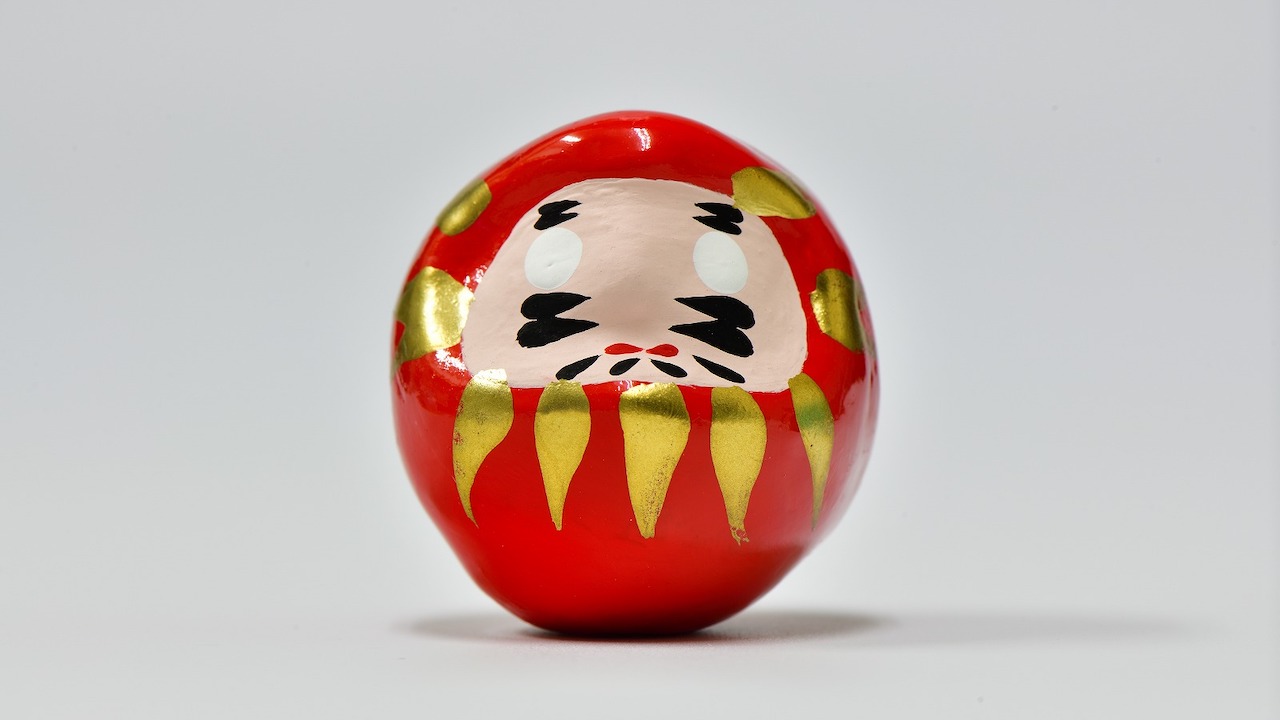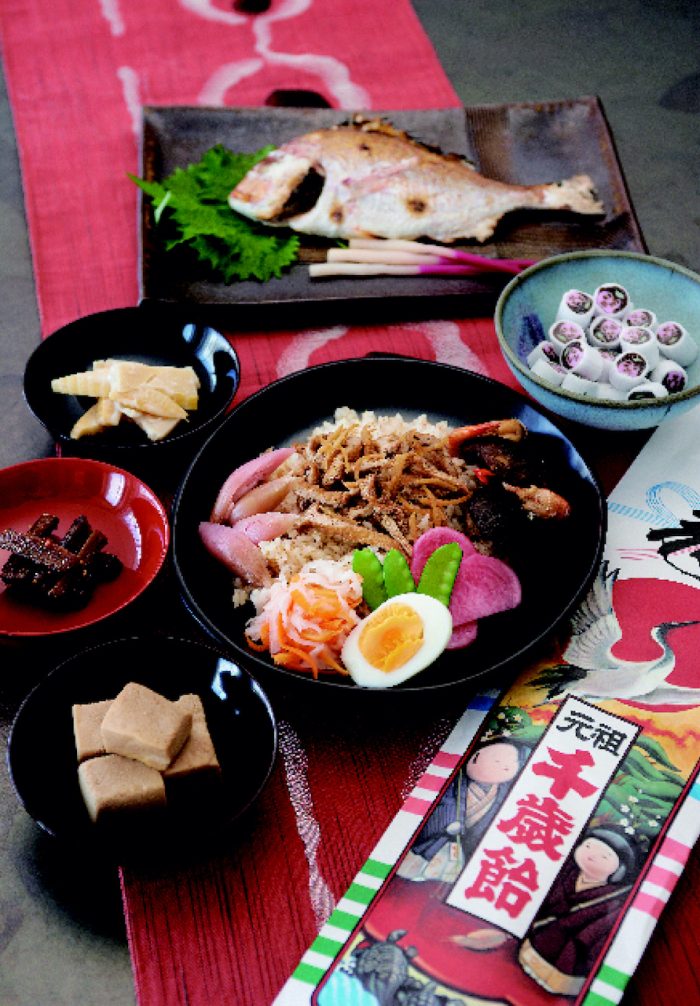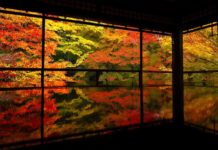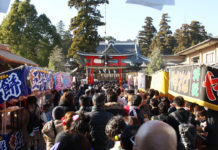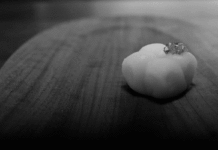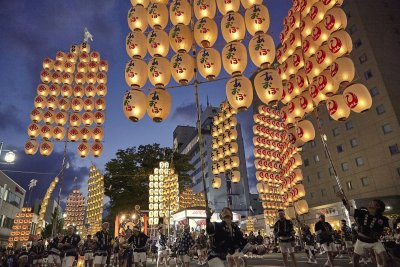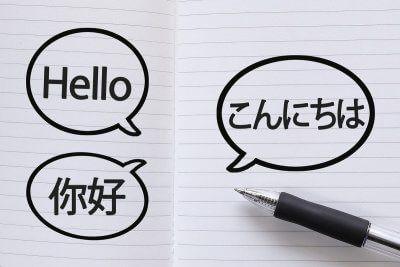Once Christmas and the New Year’s holiday are over, it’s time to get back to business as usual—unless you’re in Japan, and especially if you’re in Gunma Prefecture where most of Japan’s daruma dolls are made. Early January is the time for the Daruma Market, the place to stock up on all the items you’ll need for good fortune during the year.
Daruma-ichi
January daruma markets in the cities of Gunma and other places in Japan originated from hatsuichi, or the first market day of the year. Nowadays stores are open for business on January 1, but in the not-so-distant past, everything was closed for the three days of the New Year’s holiday1. After almost a week of visiting, fun, and eating plenty of food prepared just before the holidays, the population must have been ready to make their way to hatsuichi to fill their larders and return to their normal lives.
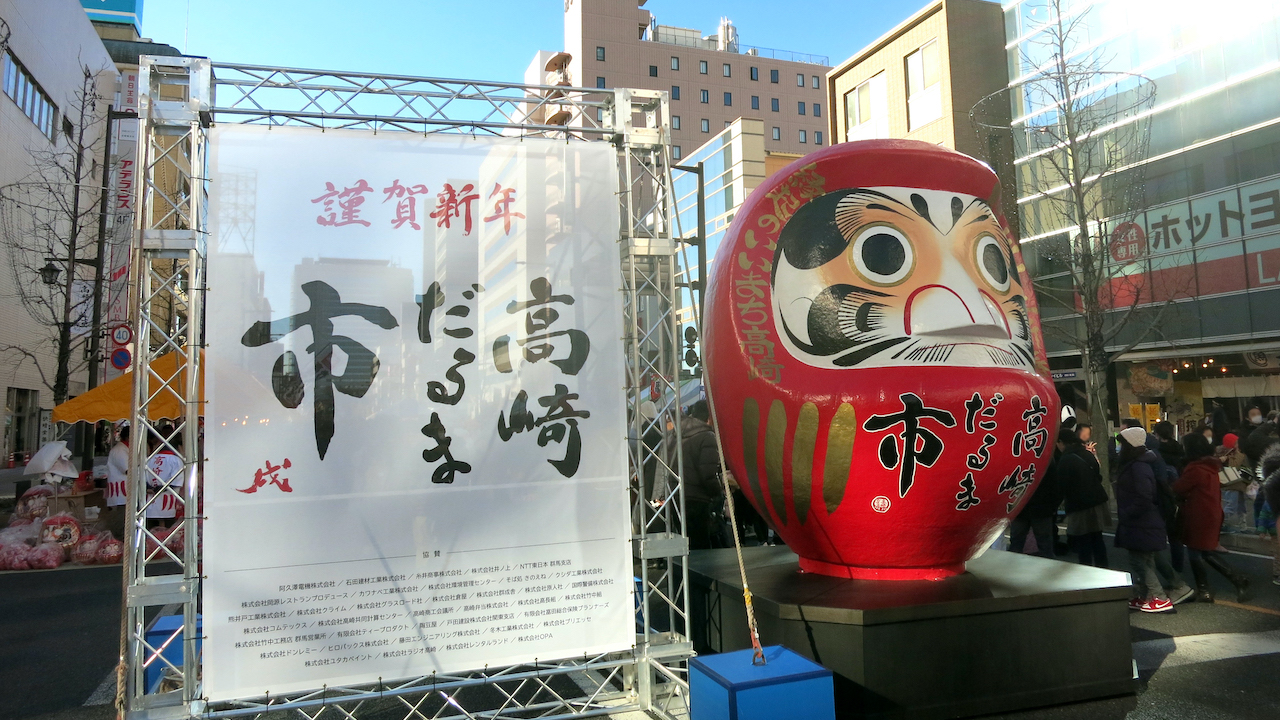
As groceries became available in shops and dependence on market days diminished, engi daruma2&3, or good luck daruma dolls, became a main draw at hatsuichi. Some towns retain the original name, while others have abandoned all pretense and changed the name to Daruma-ichi, or Daruma Market.
Main streets are lined with the booths set up by daruma artisans and filled with the ubiquitous red dolls of all sizes. Children may choose one that fits in the palm of their hand, while large companies buy daruma the size of a cask of saké, pre-ordered and inscribed with corporate names. Made out of papier mâché and surprisingly lightweight, these heralds of good fortune bear hefty prices. A little research, however, reveal the time, effort and skill that go into making each of the charmingly round figures, right down to the individually hand-painted faces. Indeed, each purchase supports this designated traditional craft.
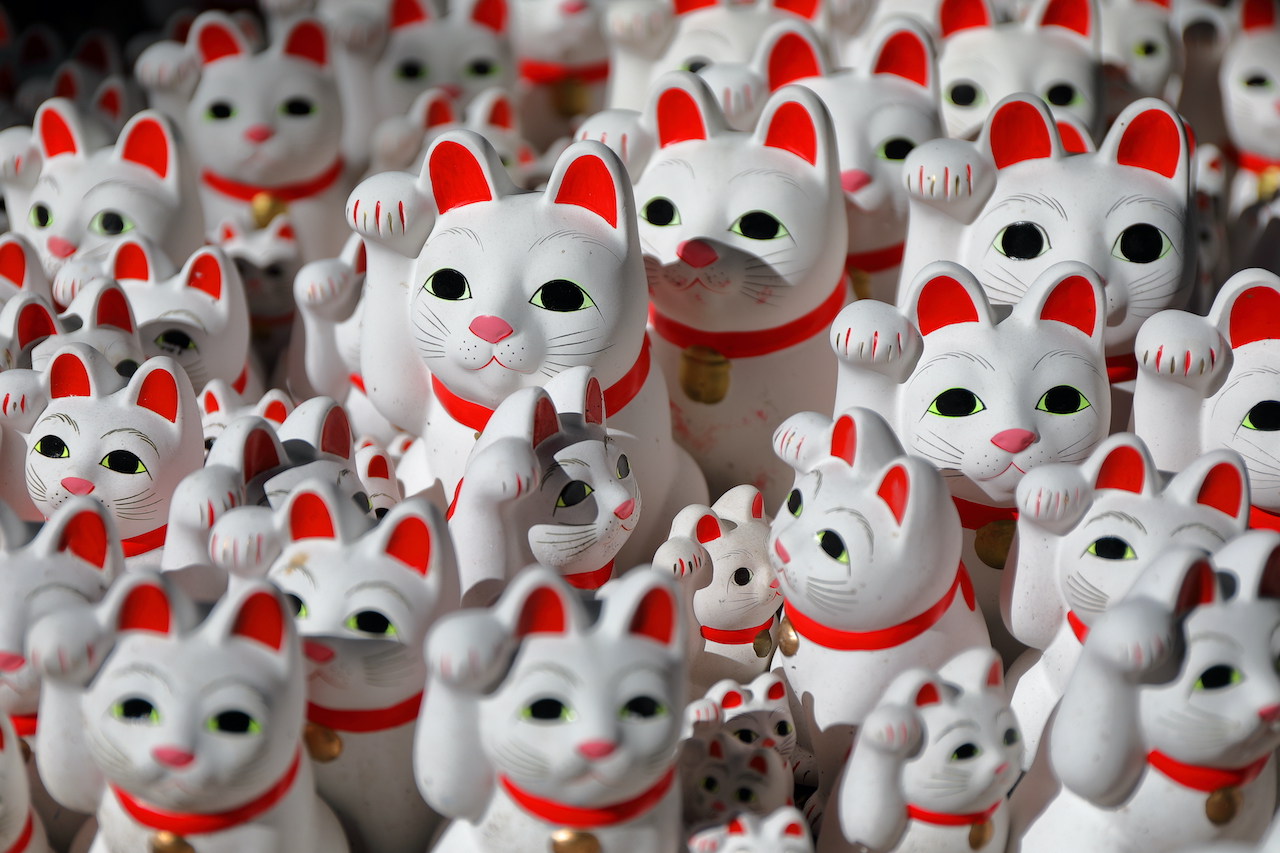
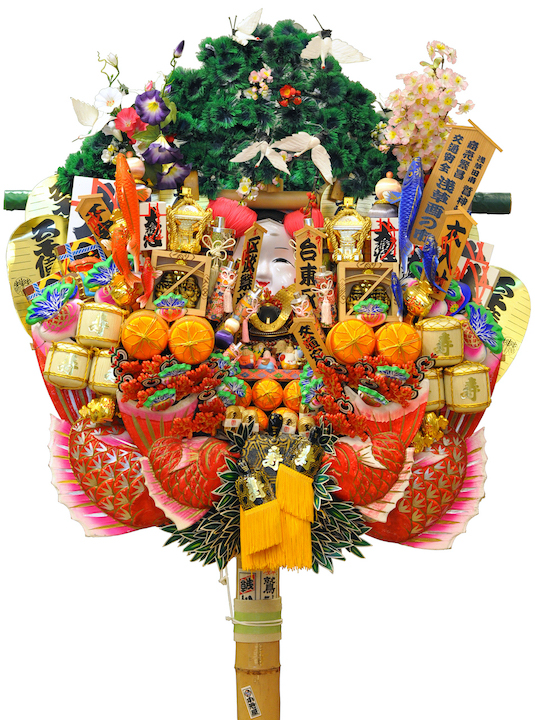
For variety, you might want a maneki-neko, a papier mâché cat with one hand up, inviting profits to walk through the door to your business. If you didn’t make it to a Tori-no-ichi in November to get a kumade, an ornately decorated rake for raking in the money (of course!), you can pick one up at a Daruma Market.
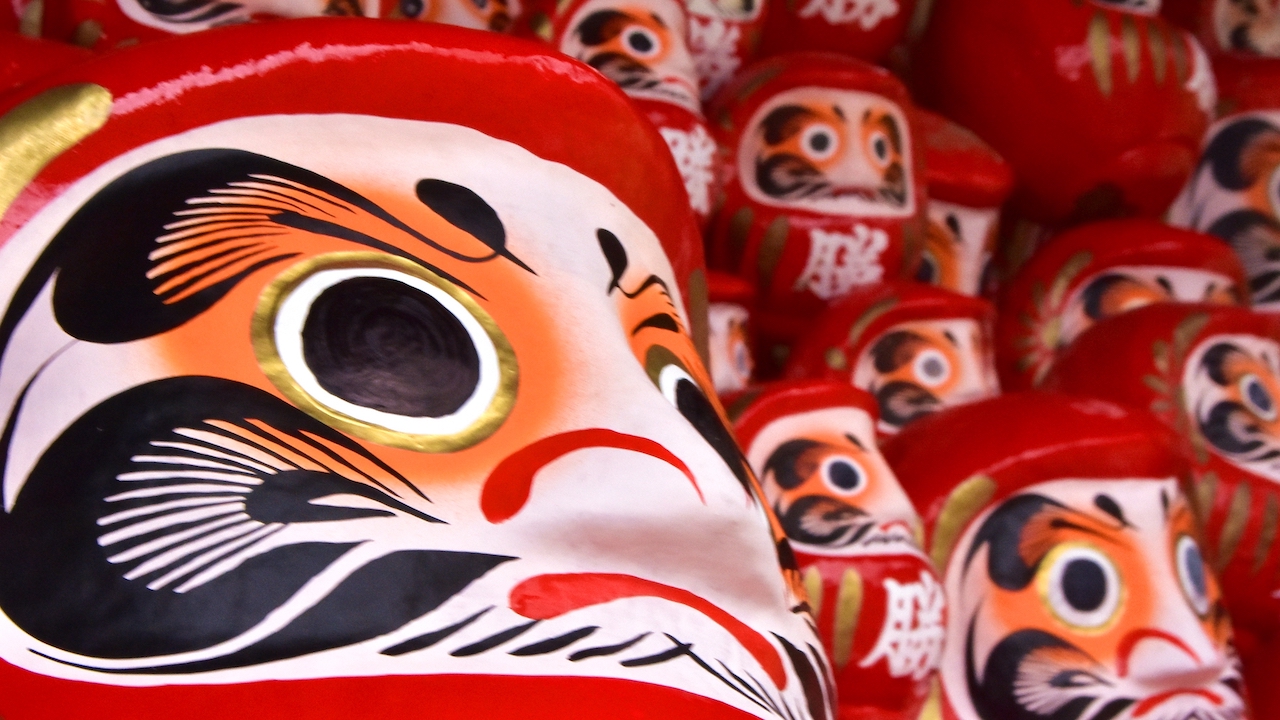
Dondoyaki bonfire
Now that you know what you need, one last issue remains. As attached as we become to our engimono (lucky items), their powers last only a year. While there is a distinct temptation to keep them around and buy new ones to do the heavy labor, where would we store them? Better to stick with tradition, here. They all have to go, but tossing them in the trash simply will not do. Before letting a daruma go, eyes need to be drawn in. The rule is to draw one at time of purchase and then add the other when our good luck comes in, or when Daruma Market rolls around. In Maebashi, the capital of Gunma, a huge bonfire is held at Hachimangu Shrine to burn and purify mementoes from the previous year. Individual neighborhoods in Takasaki, the birthplace of daruma4, hold dondoyaki bonfires made up of a large conical bamboo frame covered with straw and filled with the flammable daruma, New Year’s decorations and other items deserving of a proper sending off.
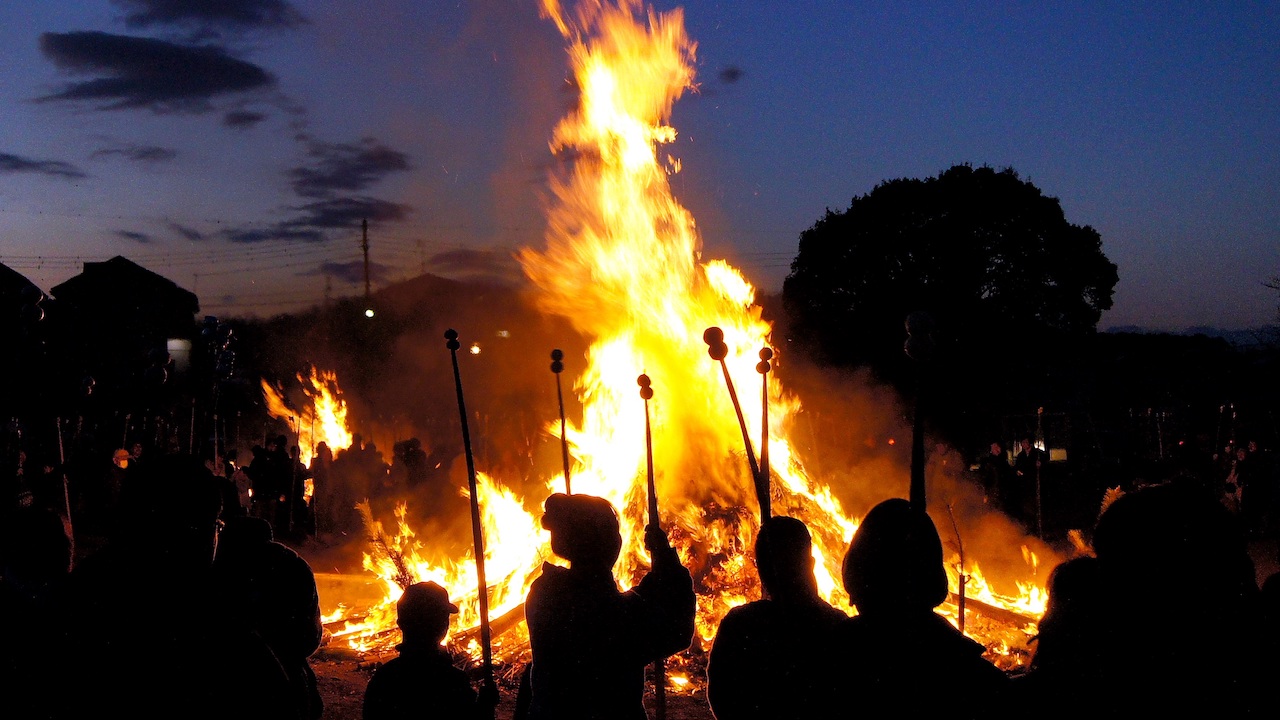
Deborah Iwabuchi , a US-born Japanese-English translator based in Gunma, Japan, runs Minamimuki Translations (minamimuki.com) and teaches at Gunma Prefectural Women’s University. She works in many different fields, has translated dozens of books by Japanese writers—prominent and otherwise—and co-authored books in Japanese on learning English.
Notes
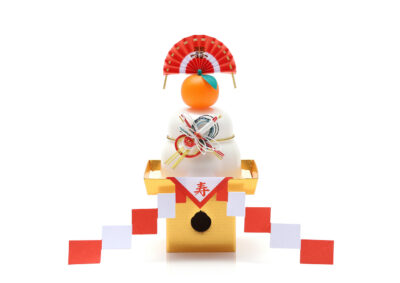
In Japan, New Years is the biggest holiday of the year. Most companies end work on or around December 28, which gives everyone about three days to do some or all of the following: send out New Year’s cards in the hope they’ll arrive on January 1, clean the house from top to bottom, buy and put up New Year decorations, pack up the family and head off to see the grandparents, clean their house, pound mochi rice cakes, cook an array of holiday dishes, and finally sit down on the evening of New Year’s Eve to eat noodles and watch TV specials until midnight. Just before the stroke of midnight, the 108 peels of joya-no-kane temple bells begin to ring out the old year and ring in the new. With the New Year officially begun, many people line up at local shrines to pray for the coming twelve months (hatsumode: read more details). January 1 to 3 can be spent leisurely eating and drinking, visiting friends and family, and taking children out to spend their toshidama New Year’s money. Adults enjoy buying fukubukuro, lucky bags of items combined by shops and sold as a whole at cut-rate prices. The holiday officially lasts until January 3, but most companies give employees a day or two to get back home, with work starting on January 5 or so. Depending on how weekends come into play, the holidays can last ten days to two weeks, giving tens of thousands the opportunity to forsake tradition and travel overseas.
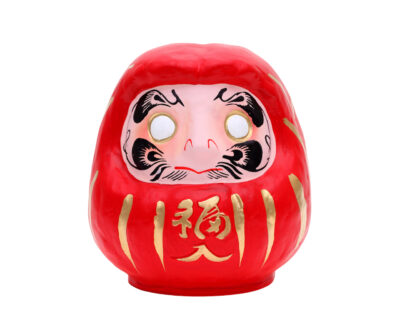
Chockful of lucky characteristics, the eyebrows are drawn to symbolize cranes and the beard to resemble tortoise. Both of these creatures are treasured for their longevity. Daruma are known for physical and mental resilience. The base of the doll is weighted so that no matter how many times it is knocked over, it will always spring back up. Except for the smallest dolls, Chinese characters expressing good fortune are painted beneath the face. The most common is 福入fuku-iri, or “bringing in fortune.”
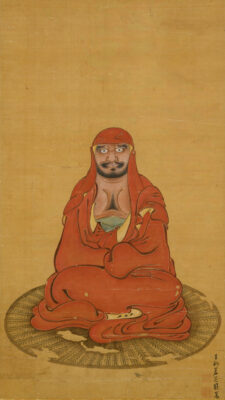
Bodhidharma, or Daruma-daishi (Great Priest Daruma) lived in the 6th century and is known for a number of things, including teaching martial arts to the monks of the legendary Shaolin Monastery as well as establishing Zen Buddhism. The fabled monk taught that meditation was in keeping with Buddha’s precepts, and it is said that he meditated in a cave for nine years. The most famous of stories surrounding this time explain the shape of daruma dolls. When he caught himself falling asleep, Daruma-daishi cut off his eyelids, hence the staring eyes. In addition, having mastered meditation, he remained motionless for most of the nine years, and in the process lost all four of his limbs from lack of use. Although the shape of daruma dolls has evolved over the years, they almost never have arms or legs.
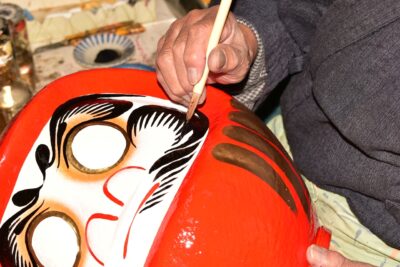
Beginning in about 1782, a terrible famine exacerbated by a catastrophic volcano eruption and disastrous government economic policies claimed tens of thousands of lives in the northeast part of Honshu. To help farmers in the area whose livelihood had been ruined, the ninth-generation chief priest of Shorinzan Darumaji Temple in Takasaki taught them how to carve wooden molds and make the papier mâché daruma dolls to sell on an auspicious day during a post-New Year temple festival. In the years and generations that followed, more and more farmers began to supplement their off-season income by making daruma. Today, the Takasaki area makes 900,000 of the figures each year, which make their way to homes and businesses throughout the country.
 0
0

